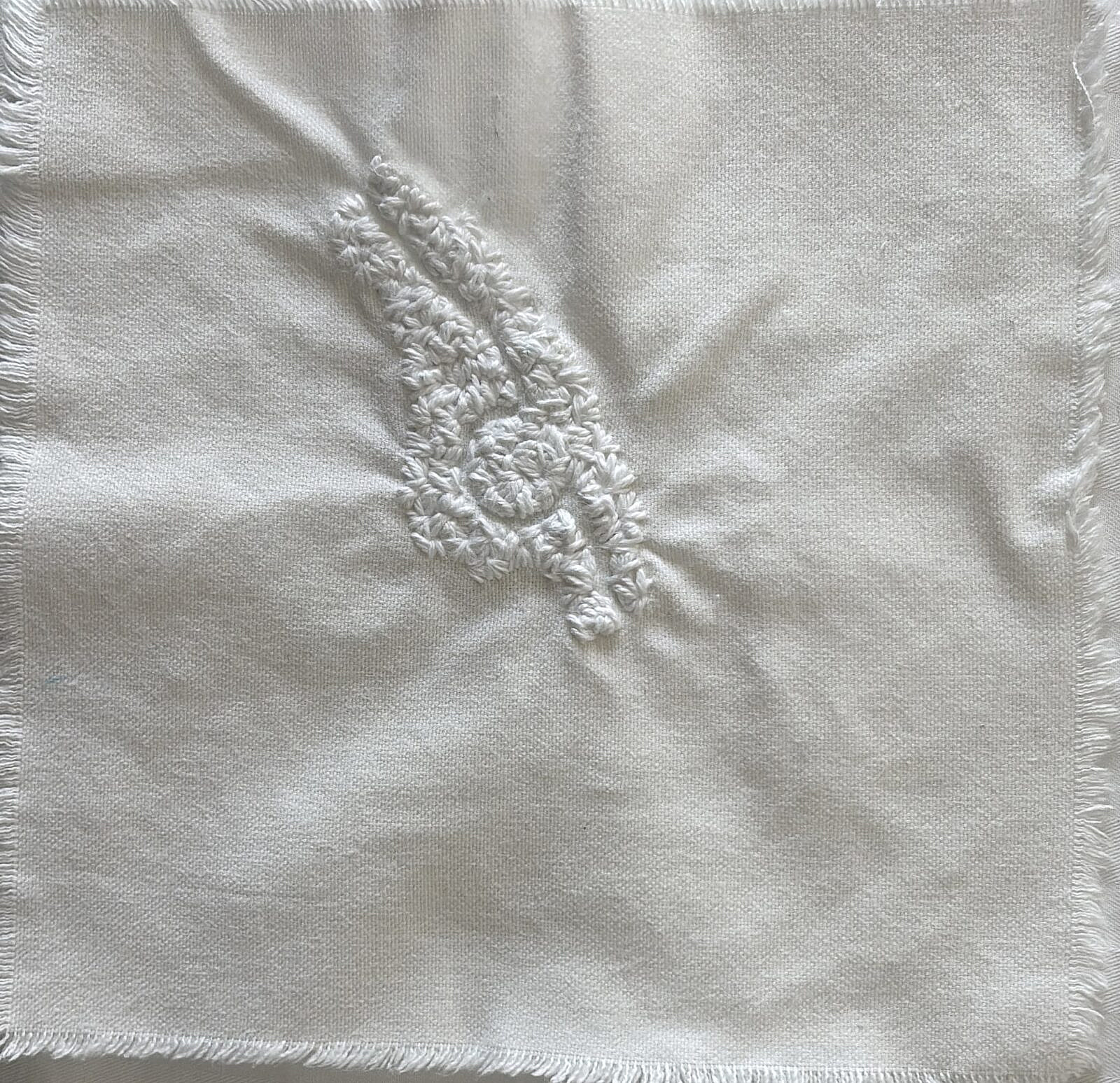ARTISTS: Majd Abdel Hamid, Kent Chan, Nolan Oswald Dennis, Sharon Hayes, Tea Kantoci with selma banich, Nika Pećarina and Anna Javoran, Belinda Kazeem-Kamiński, Onyeka Igwe, Glorija Lizde, Alban Muja, Nii Kwate Owoo, Fette Sans, Miloš Trakilović
CURATED BY: What, How and for Whom / WHW and Ana Kovačić
Opening: Wednesday, 22/10/2025, 19h
Etnographic Museum Zagreb, Mažuranić Square 14, Zagreb
17:30h artist talks: Majd Abdel Hamid and Miloš Trakilović
The exhibition is open until the 30th of November 2025 and can be visited in the Ethnographic Museum Zagreb during the opening hours:
Tuesday – Friday, 10 to 18h
Saturday and Sunday, 10 to 13h
During the exhibition, Tea Kantoci curated a performance program with Nika Pećarina, selma banich and Anna Javoran. Dates of the performances will be announced on whw.hr
In 1939, Aimé Césaire (1913-2008) first published his extended poem, Return to My Native Land. Now considered a hymn to the African diaspora and a pivotal text of the Négritude movement, the poem launched a compelling critique of the French colonial system. While first and foremost a poet, Césaire had also built an extensive career as a politician from Martinique, a Caribbean island that has been part of the French Antilles since 1946. Césaire was the mayor of the island’s capital, Fort de France, and for many years also served as the representative of the island in the French National Assembly. A communist until 1956, he stayed involved in anti-colonial politics through the end of his life.
Deemed one of the founders of Négritude, a movement that attempted to vindicate African cultural values devalued by the colonial and postcolonial system, Césaire was a crucial figure among radical Caribbean intellectuals, whose work was informed by the experience of slavery, colonialism, and the struggles for decolonization. He cemented this position with the 1950 publication of his famous poetic political text Discourse on Colonialism, which Robin D. G. Kelley likened to ‘almost a third world manifesto.’ Drafted in the aftermath of the fascism that had left Europe in ruins, in a moment when old empires were beginning to collapse and the age of decolonization was still just dawning, the text famously demonstrates how colonialism affects (and ruins) not only the colonized, but also the colonizers. Césaire draws a direct link between the logic of colonialism and the rise of fascism, claiming that fascism had been tolerated and legitimized as long it has applied to non-Europeans. What back then seemed like provocation, today offers crucial insight into the present struggles for liberation and justice.
In Return to My Native Land, Césaire repeated the refrain “at the end of the small hours” as an evocation of a present moment steeped in the sense of the impending end to something already past, something that no longer carries any promise. At the same time, the phrase teases the beginning of something whose shape is still unclear. By taking this refrain as its title, this exhibition issues a call to move away from the notion of “single roots” towards multiple forms of belonging and potential solidarities.
One such solidarity is modeled in the friendship between Césaire and linguist Peter Guberina. While the men first met as students at the Sorbonne, they would forge a lifelong friendship bound by a shared commitment to the anti-colonial struggle. In 1935, in a curious twist of fate, Guberina invited Césaire to Šibenik. We first learned about this meeting through Françoise Vergès’s text “Martinska/Martinique. Aimé Césaire Return to My Native Land,”[1] in which she describes how “this descendant of African slaves, this colonized of the French colonial empire” was inspired and moved by the similarities he observed between Martinique and the Dalmatian city. Vergès proposes that by coming to Dalmatia from Paris, Césaire staked the necessary distance from a colonial center to find his voice and start writing Return to My Native Land.
There are different accounts of their meeting but what emerges as important is not some definitive version or interpretation, but rather a mode of research built around anecdotes and personal connections, lived experiences and encounters, improvisation and political solidarities. We took this same approach as a starting point for this exhibition. Situated within Zagreb’s Ethnographic Museum, an institution itself embedded in the colonial legacy, “At the end of the small hours” plots an imagined cartography of connections and exchanges across time and space. What we took from the story of the meeting between Césaire and Guberina is the possibility of building transnational lines of solidarities that pick up where historical anti-imperialist struggles stopped, while also recognizing the historical accounts of this meeting as something of use for a political project of the future.
Majd Abdel Hamid
Sea Lines, 2025
Majd Abdel Hamid’s artistic practice is rooted in applying slow, repetitive, performative gestures like embroidery as a counterbalance to high-speed digital image production. Working across video, installation, drawing and sculpture, he explores themes of national identity and trauma. Building off of the artist’s ongoing series ‘Borderlines’ (2017-), his most recent body of work, Sea-Lines (2025) uses thread to plot the maritime boundaries of the Mediterranean Sea. The abstract lines trace the impossible, yet politically enforced divisions of water.
Majd Abdel Hamid is a visual artist from Palestine, who is currently based between Beirut and Paris. He attended the International Academy of Art in Palestine, before graduating from the Malmö Art Academy in Sweden. His solo exhibitions include “800 meters and a corridor”, gb agency, Paris (2022); “Muscle Memory”, Centre for Contemporary Arts, Glasgow (2022); and “A Stitch in Time,” Fondation d’Entreprise Hermès, Brussels (2021). His work has been featured in numerous group exhibitions, including “Splendid Isolation,” SMAK, Ghent (2022); “Répare, Reprise,” Cité International des Arts, Paris, (2021); “Heartbreak,” Ruya Maps, Venice; and “Touché! (gesture, movement, action),” Beirut Art Center, (2019).
Nolan Oswald Dennis
with Anka Belobrajdić, Robert Guša, Ana Karlović, Kristina Matković, Ivana Prodan and Sanja Agneza Sabo Majer
Xenoliths, 2025
Literally meaning “foreign rock,” xenolith is a term used to describe heterogenous rock fragments that have been incorporated into otherwise homogenous formations. Drawing on this geological phenomenon, Nolan Oswald Dennis has developed Xenoliths (2025), sculptures that use indigenous earth construction methods to model the socio-geological relationships between a specific community of people, a particular place and an alternate spacetime of alienation and belonging. These works are produced collectively, without the direct intervention of the artist. Volunteers follow a recipe written by Dennis in collaboration with a geologically defined place and a community forged from people conscious of, and in critique of, the typical power dynamics operating in that place. The rules of this collaboration are determined and revised by the temporary community responsible for producing the work. In Zagreb, that community included employees of the Ethnographic Museum.
Nolan Oswald Dennis is an artist based in Johannesburg, South Africa. Their practice explores the material and metaphysical conditions of decolonization, questioning histories of space and time through system-specific interventions. They hold a Bachelor’s degree in Architecture from the University of the Witwatersrand (Wits) and a Master’s degree in Art, Culture, and Technology from the Massachusetts Institute of Technology (MIT). Their work has been the subject of solo exhibitions at Kunstinstituut Melly in Rotterdam, Swiss Institute in New York, and Zeitz MOCAA in Cape Town. They have been featured in group exhibitions including FRONT Triennial, Cleveland; Lagos Biennial; Liverpool Biennial; MACBA, Barcelona; Palais de Tokyo, Paris; Seoul Mediacity Biennale; Shanghai Biennale; and Young Congo Biennale. They are a member of artist groups NTU and Index Literacy Program, a research associate with the VIAD Research Centre at the University of Johannesburg, and a member of the Edouard Glissant Art Fund Scientific Committee.
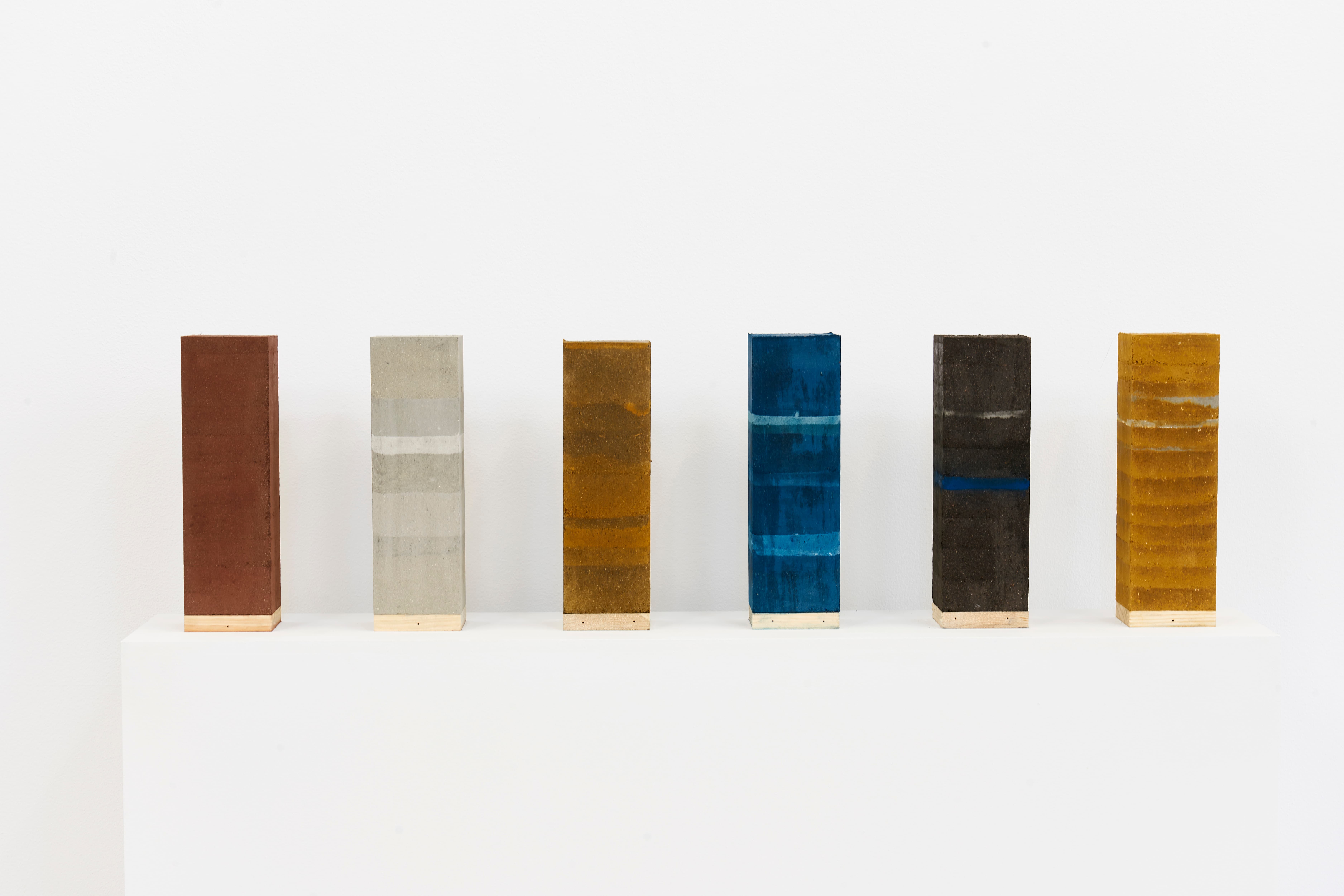
Sharon Hayes
I March In The Parade of Liberty But As Long As I Love You I’m Not Free, 2007 – 2008
Sharon Hayes has built a practice through conversation and collective acts, dismantling the grammars—linguistic, affective, and sonic—through which political resistance manifests. For the eight-part performance I March In The Parade of Liberty But As Long As I Love You I’m Not Free (2007-2008), the artist walked from New York’s New Museum of Contemporary Art to sites of public speech such as Union Square, Tompkins Square, Christopher Street Park, and Chinatown’s Confucius Square. Wielding a bullhorn along her way, Hayes read aloud a love letter compiled from sources such as newspaper reportage from NYC from the early days of the Gay Liberation Movement, slogans from queer rights protests from 1969 to 1993, and Oscar Wilde’s “De Profundis” (1897), the letter he wrote to Lord Alfred Douglas from prison. As the artist describes, “This work attempts to speak about certain intersections between love and politics that aren’t so often talked about.”
Sharon Hayes is an artist who uses video, performance, sound, and public sculpture to expose specific intersections between history, politics, and speech. Hayes has had numerous solo exhibitions, including at n.b.k. (Neue Berliner Kunstverein), Berlin (2022); Moderna Museet, Stockholm (2019); the Whitney Museum of American Art, New York (2012); and the Museo Nacional Centro de Arte Reina Sofia, Madrid (2012). Her work has also been exhibited at the Whitney Biennial (2024), Venice Biennale (2013), the Solomon R. Guggenheim Museum, and the Museum of Modern Art in New York. She is Chair of the Department of Fine Arts, Weitzman School of Design, University of Pennsylvania, where she has been teaching since 2015.
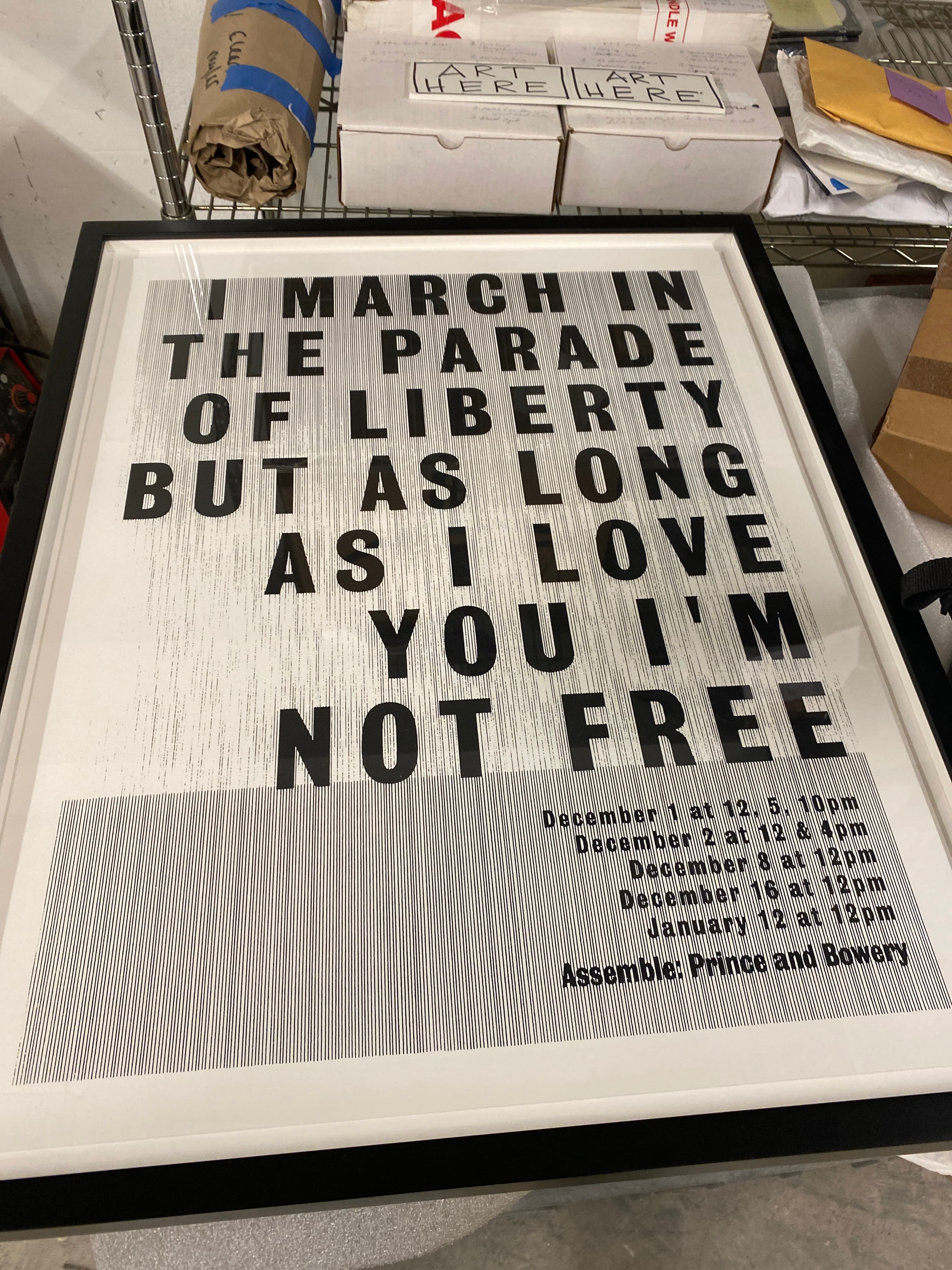
Belinda Kazeem-Kamiński
In Remembrance to the Man Who Became Known as Angelo Soliman, (Ante Mortem) I & (Post Mortem) II, 2015
This two-part photographic work deals with the display of the body of Angelo Soliman (unknown-1790) in the former Imperial and Royal Court Museum and Natural History Museum in Vienna. The man who became known as Angelo Soliman was abducted from the African continent as a child, enslaved, and ended up serving the Prince of Liechtenstein. Immediately following his death from what was most likely a stroke, his body was stuffed and later exhibited. In this work, Belinda Kazeem-Kaminski concentrates on items that were assigned to Soliman—a turban; pyramidal objects; a metal lion; red, blue, and white feathers—and used to objectify him both during his lifetime (ante mortem) and after his death (post mortem). The objectified human is absent, whereas the tools of his objectification remain and become the objects of artistic inquiry. In employing this perspective, Kazeem-Kaminski contradicts the voyeuristic compulsion and racist prejudices that foreground (Western) museal (ethnographic) representation. But this diptych does not simply show the display cases containing Soliman’s props: both photographs also feature two arms, decked in black sleeves with white gloves, that hold the cases, evoking the figure of the custodian or restorer. In creating this effect of a frame within a frame, the work insists on the museal apparatus and its relentless logics of collecting, preserving, and exhibiting. Anne Faucheret and Belinda Kazeem-Kaminski
Belinda Kazeem-Kamiński is a Vienna-based writer, artist, and researcher whose work spans text, video installation, photography, and performance. Rooted in Black feminist theory and practice, her research-driven approach investigates the complexities of Black life within the African diaspora, with a focus on the German-speaking context. Her projects often start with archival residues and interweave multiple spaces and temporalities, challenging boundaries between documentary and speculation. Her first monograph, H(a)untings / Heim-Suchungen, was published by Sternberg Press in 2023. She is currently developing a long-term research project exploring African Diaspora temporalities, funded by the Austrian Academy of Sciences. Her work has been shown at Art Encounters, Timişoara (2025), Art X Lagos (2023), the Liverpool Biennial (2023), Les Rencontres d’Arles (2022), Camera Austria Graz (2022), and Kunsthalle Wien (2021), and screened at the International Film Festival Rotterdam and Vancouver International Film Festival. She has been awarded with the Otto Mauer Prize (2023), the Art X Prize for Africa Diaspora (2022), and the Camera Austria Award (2021).
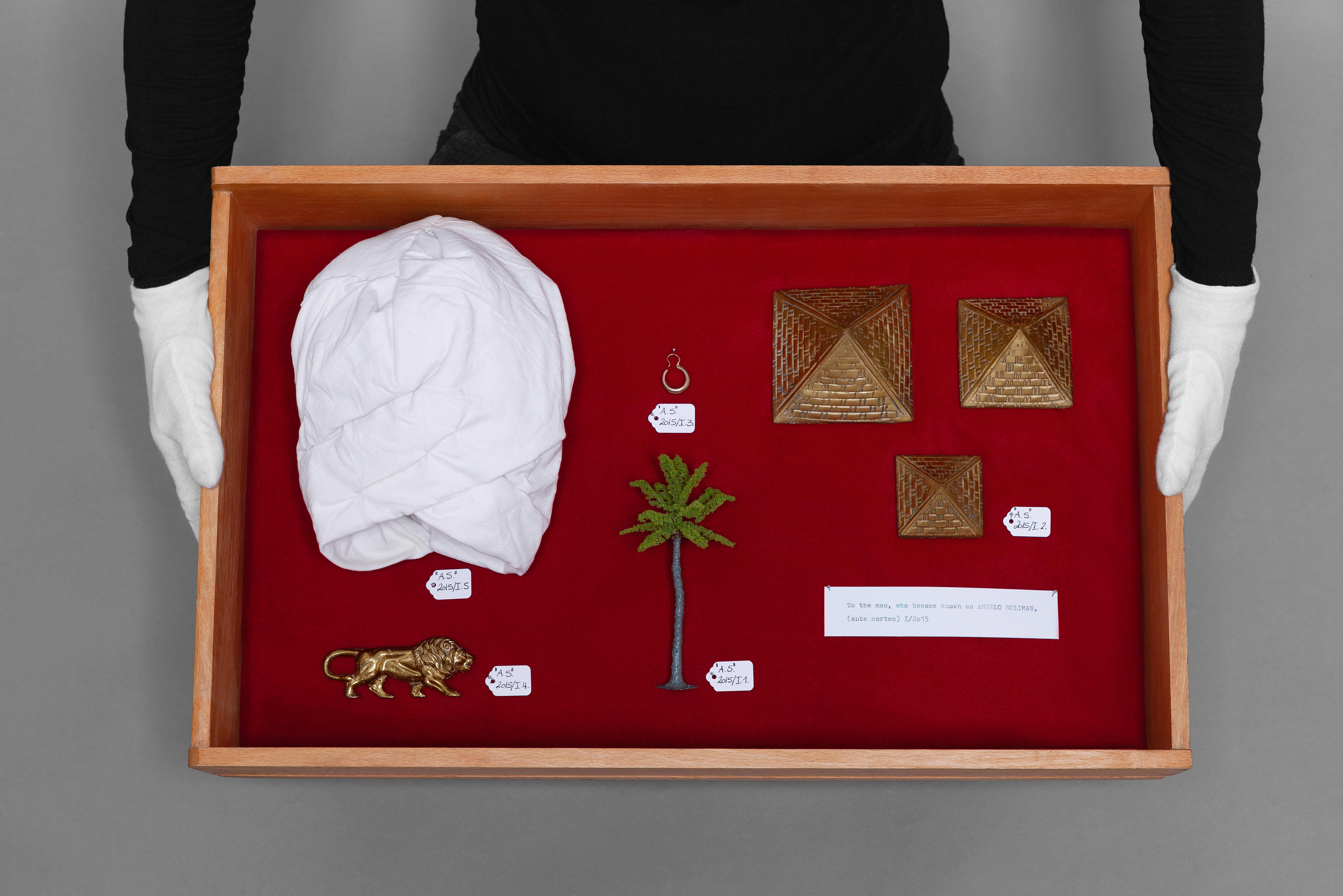
Glorija Lizde
Fearless Youth, 2024
The photography series “Fearless Youth” (2024) is based on the eponymous, unpublished autobiography of my grandfather Hasan (1928–2011) in which he recalls, among other things, his experiences in World War II. His upbringing in a Muslim village in Bosnia and Herzegovina (then Yugoslavia) was abruptly interrupted when he, following in the footsteps of his older brothers, joined the fascist Ustashe army in 1943. In 1945, he surrendered and joined the Partisan movement, National Liberation Army. Following my grandfather’s descriptions, maps, and routes and using his book as a compass, I traveled 1800 km through Croatia, Bosnia and Herzegovina, and Slovenia to visit the places he describes, burdened by history and marked by traumatic events. Through the act of photography, they became personal monuments of our relationship, a meeting point of the past and the present. Like an unwanted family heirloom, the past is passed down from generation to generation, we are born into it and we carry it even if we never witnessed it. Using archival material along with the landscapes and self-portraits, I am weaving a map of intertwined personal and collective history to establish a dialogue with my late grandfather’s past, a past that is inevitably mine. Glorija Lizde
Glorija Lizde, based in Split, holds a BA in Film and Video from the Arts Academy in Split and an MA in Photography from the Academy of Dramatic Art in Zagreb. Her work explores themes of family dynamics, inheritance, and memory, using both documentary and staged photography. She has held several solo exhibitions and participated in numerous group shows in Croatia and internationally, including the O21 OSTRALE Biennale; “She Who Starts the Song” for the 17th Gjon Mili International Exhibition of Photography and Moving Image, Prishtina; “Familiar Fantoms,” Residency Unlimited, New York; Athens Photo Festival, Benaki Museum, Athens; and “Floodlit Room – Women’s Photographic Practices in Croatia,” for The 57th Zagreb Salon. In 2022, she received the Dr. Éva Kahán Foundation Scholarship and Residency and was awarded the Radoslav Putar Award for the best young visual artist in Croatia.
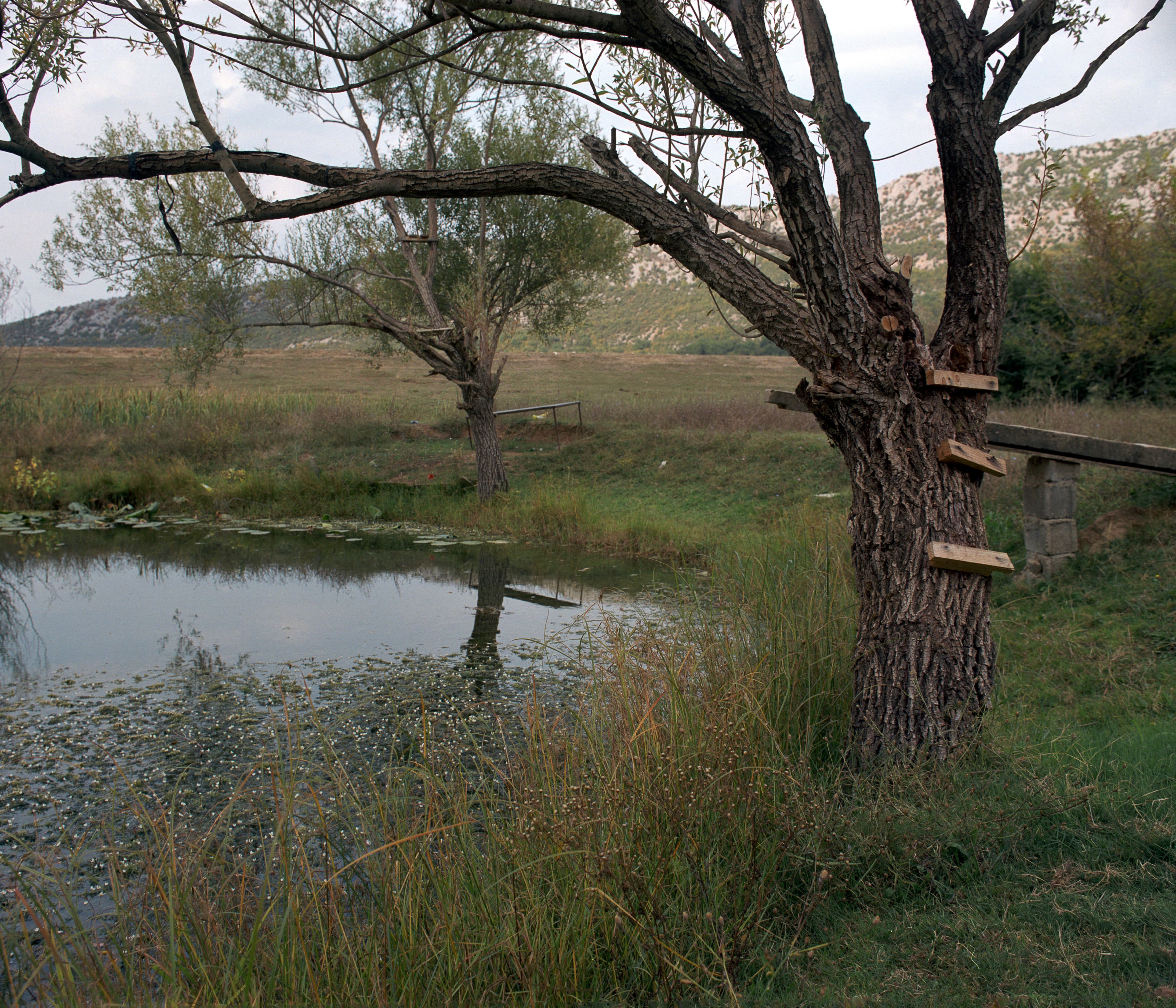
Alban Muja
I Believe the Portrait Saved Me, 2025.
I Believe the Portrait Saved Me (2025) is rooted in a deeply personal story of survival during the Kosovo War. Twenty-five years after his abduction, my father, the painter Skender Muja, recounts the harrowing months he and many others endured when they were captured while fleeing Mitrovica and detained in a repurposed school. Through his narration, the film explores how art became more than expression—it became a lifeline. The work interweaves his memories with reflections on the transformative role of painting, demonstrating how creativity can serve as a form of resistance, resilience, and survival under oppressive conditions. This piece is both a remembrance of a painful history and a meditation on the enduring capacity of art to preserve one’s voice, dignity, and humanity, even when everything else is stripped away.
– Alban Muja
Alban Muja is a Kosovan contemporary artist and filmmaker based in Berlin and Prishtina. His work is primarily influenced by the social, political, and economic transformation processes in the wider Balkan region. Through a multidisciplinary practice, he investigates history and socio-political themes, often linking them to his own position in Kosovo today. In 2019, Muja represented the Republic of Kosovo at the 58th Venice Biennale with his three-channel video installation Family Album. His work has been presented in numerous international exhibitions and festivals, including the 75th Berlinale (Forum Expanded); Art Encounters Biennial, Timișoara; Sarajevo Film Festival; Manifesta 14, Prishtina; Ludwig Museum, Budapest; MAXXI Museum, Rome; 3rd Industrial Art Biennial, Istria, Croatia; MOMus Experimental Center for the Arts, Thessaloniki; Kumu Art Museum, Tallinn; Guangdong Museum of Art; Museum of Contemporary Art, Skopje; Forum Stadtpark, Graz; Zachęta National Gallery of Art, Warsaw; National Gallery of Kosovo; Staatliche Kunsthalle, Baden-Baden; the 28th Ljubljana Graphic Biennale; the National Gallery of Arts, Tirana; and the Cetinje Biennale, among others.
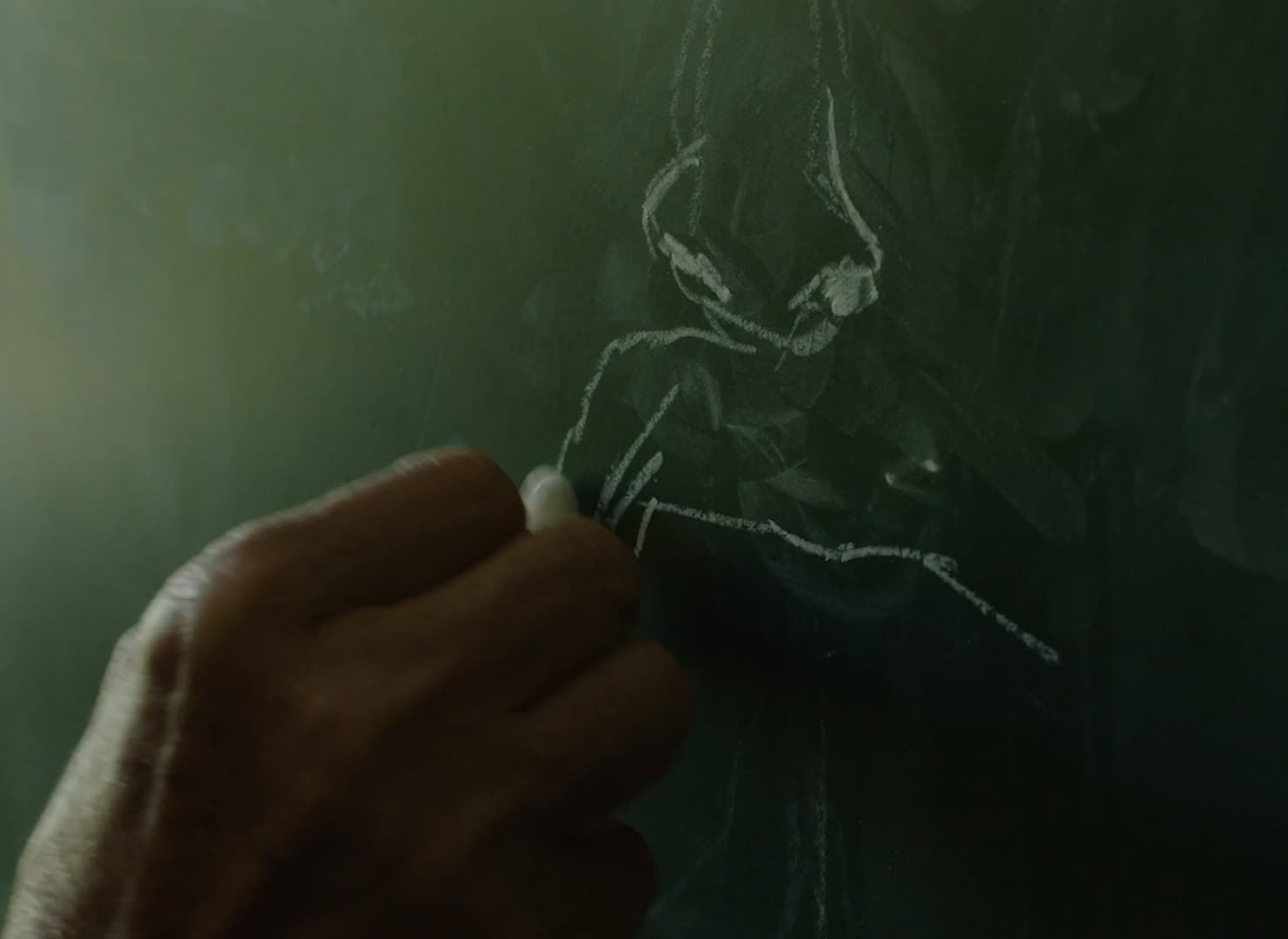
Fette Sans
Prophecies so accurate they had to be buried, 2025.
These objects are to be worn in battle—to contest what keeps us shackled to the position in which it is easier to expect the end of the world than to imagine an end to capitalism. Perhaps optimism is devotional, perhaps it takes a certain kind of litany for superstition to become a weapon, to turn ornamental. Each piece is a divination mirror is a unique assemblage of found objects is a scepter against sovereignty.
Each piece kills fascists. Fette Sans
Fette Sans is a Zagreb-based conceptual artist whose films, performances, writings, and installations consider how reality is performed and mediated by images—particularly via screens. Her multi-disciplinary practice explores states of being and belonging, stemming from existing as an aging neuro-divergent, queer body, and weaves in durational and devotional ideas of total communication. Collaboration is primordial. She has been developing many actions alongside actors, musicians, and writers—often with origins outside of “professional fields,” subsequently producing printed materials which she insists on distributing with open-hand as to divert from the hegemony of the-everything-online-all-the-time.
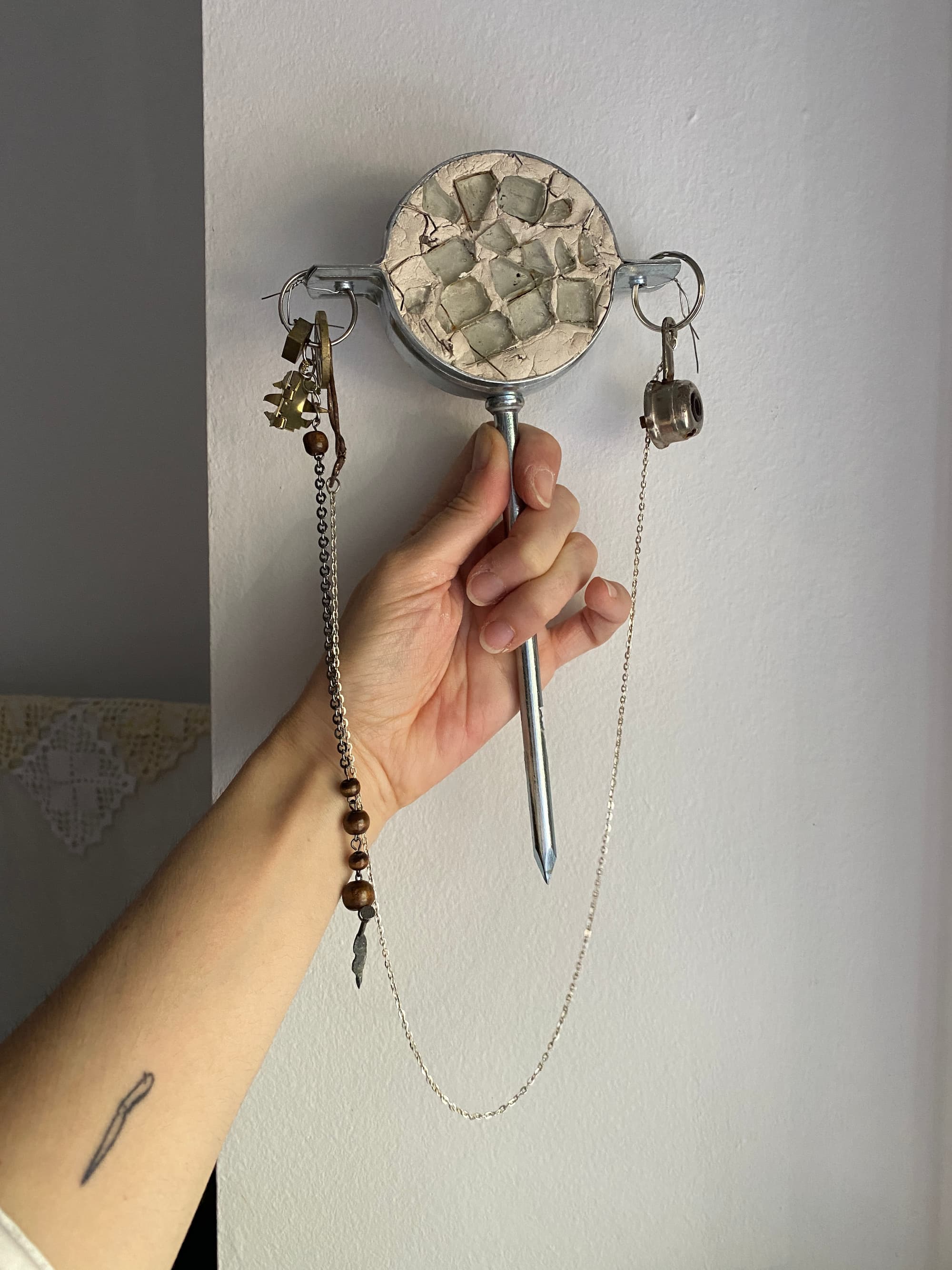
Miloš Trakilović
Colorless Green Freedoms Sleep Furiously, 2023
In Colorless Green Freedoms Sleep Furiously (2023), the color green poetically weaves through different storylines about freedom, visibility, and memory. The work is based on conversations between Miloš Trakilović and his mother, in which they discussed their lives during the war in Bosnia and their arrival in the Netherlands as refugees. In the film, the artist’s mother shares how a patch of grass at the refugee center—so alive, green, and lush—momentarily freed her from the experience of being in a warzone. The work attempts to retrace and recreate that moment through diverse visualization techniques, shifting fluidly between simulated and existing landscapes. Filmed in the Netherlands and Bosnia and Herzegovina, the work unfolds as an inquisitive and poetic dream sequence that challenges the hegemonic role of truth in narratives of war, displacement, and visual culture at large, ultimately invoking the invisible, unrelenting spectral forces that shape the memory and experience of war.
Miloš Trakilović is an artist based in Berlin who primarily works with digital and time-based media, focusing on themes of dissolution, fragmentation, memory, and loss. His recent work examines the role of vision in shaping meaning and producing power in the wake of the digital turn, investigating how technological advancements and digitalization influence human perception. He holds a BFA and MFA from the University of the Arts in Berlin, where he studied in the Experimental Film and New Media Art department. His work has been presented at Kunst Werke, Berlin (2025); National Art Center, Tokyo (2024); Grazer Kunstverein, Graz (2023); Trafó Gallery, Budapest (2023); Stedelijk Museum, Amsterdam (2022); Badischer Kunstverein, Karlsruhe (2021); Ljubljana Biennale of Graphic Arts (2021); Kunsthalle Wien, Vienna (2020); Neuer Berliner Kunstverein, Berlin (2019), among others. His work is held in public collections including the Museum of Modern Art, Warsaw, and Neuer Berliner Kunstverein (n.b.k.), Berlin. Trakilović was a resident at the Rijksakademie van Beeldende Kunsten in Amsterdam from 2022 to 2024.
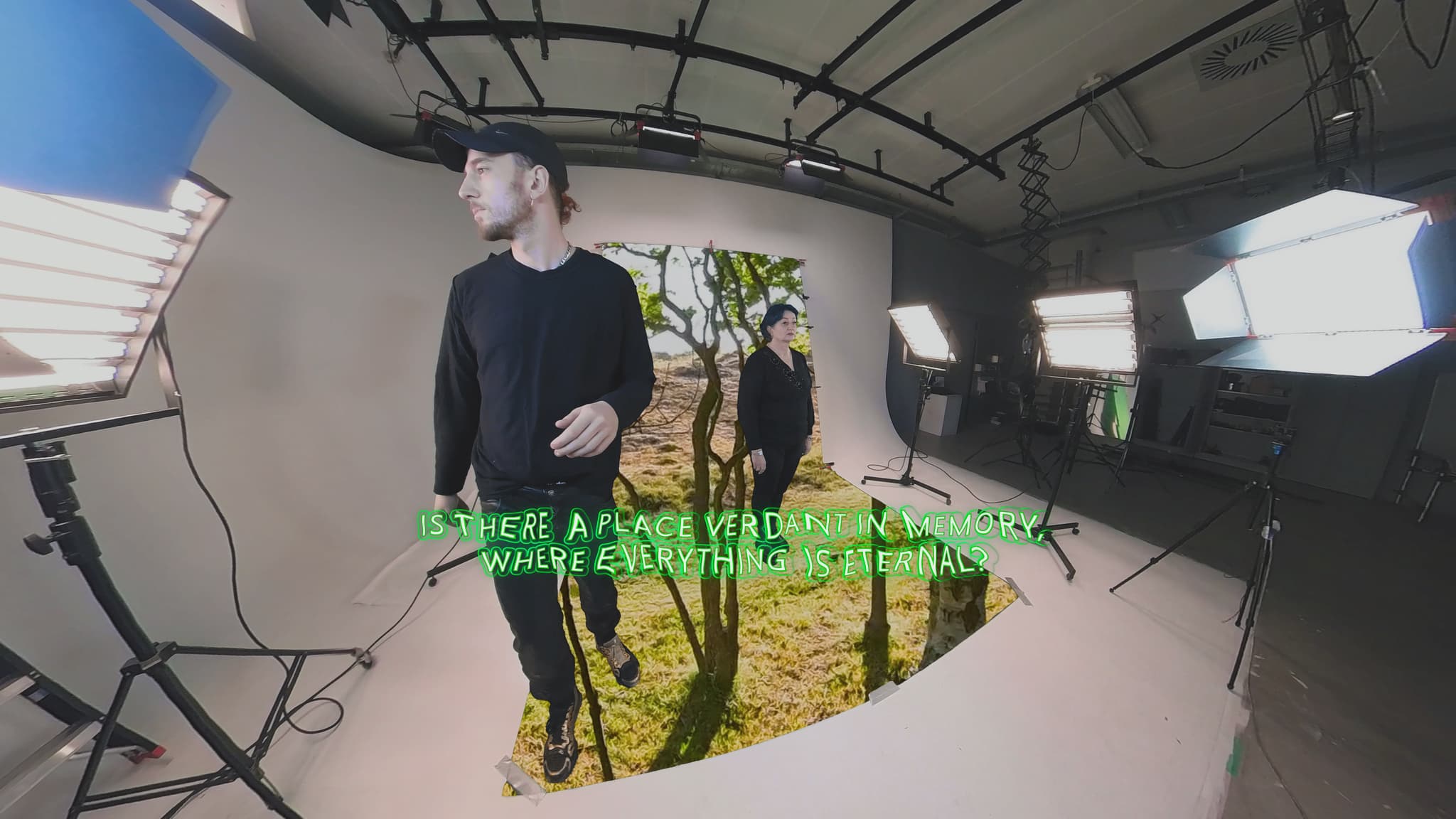
PERFORMANCE PROGRAM
For this exhibition, Tea Kantoci curated a series of performances taking place in the storage of the Ethnographic Museum, featuring selma banich, Anna Javoran, and Nika Pećarina.
The performance program unfolds as a dramaturgy in which the works merge into one another, establishing relationships beyond the hierarchy and logic of the museum order. In direct defiance of this order, Nika Pećarina’s work imagines destiny through the lens of reincarnation, unmooring the individual and freeing time from linearity. This serves as a kind of segue into the practice of selma banich, which gives form to an identity that inhabits absent spaces and develops objects of memory and knowledge. From these fragments emerges the performance of Anna Javoran, which kindles a collective spark of poly-erotic imagination, drawing on traces of past and future possibilities. Each performance contextualizes the other, establishing a nuanced choreography of relations through which the collection, identity, memory, and imagination become open fields of inscription and transformation, eluding finality and stability and turning voice, body, movement, and image into facilitators of a shared, plural being. Tea Kantoci
Tea Kantoci is a curator and researcher based in Zagreb, working at the intersection of performance, experimental formats, and interdisciplinary artistic practices. She is part of the curatorial-organizational team of both Antisezona, a year-round program of contemporary dance, new media, and related practices at the Museum of Contemporary Art Zagreb (MSU), and the festival Improspekcije / PoslijeSvijet, which explores embodied futures through the performing arts. Her practice is based on long-term, process-oriented collaborations and the development of infrastructural imagination. She is actively involved in local initiatives such as Klaonica, which advocates repurposing the former city slaughterhouse into an autonomous space for artistic production, and Arhiv odozdo (Archive from Below), which focuses on organizational memory as a tool for sustainability and care in cultural work. She co-coordinates Društvo 11 lisica, a feminist reading-and-viewing club, together with dramaturg Nina Gojić. She collaborates with MSU Zagreb, Muzej susjedstva Trešnjevka, and organizations such as BLOK, Kurziv, Kulturtreger, Kik Melone, and Divert. She holds an MA in Journalism from the Faculty of Political Science (FPZG), an MA in Theory and Culture of Fashion from the Faculty of Textile Technology (TTF), and an MA in Museology and Heritage Management from the Faculty of Humanities and Social Sciences in Zagreb, and she completed the Education Program of the Center for Women’s Studies in Zagreb.
selma banich
Yugo-Palestinian, 2025
selma banich’s performance embodies a Yugo-Palestinian entity, conceived as a voice and a body that inhabits personal, political, and collective space. One-to-one encounters are shaped as intimate rituals of trust, in which somatic practices summon and form objects of knowledge, memory, and impulse. What emerges in these encounters is given and entrusted to the Ethnographic Museum’s collection, as heritage yet to be interpreted. The work unfolds as a process of archiving through touch, breath, and shared imagination, where the present becomes something written anew, from within.
selma banich is an artist, activist, community organizer, and expressive art therapy practitioner. Her artistic practice is rooted in process-based, research-driven, and activist work, and is politically inspired by anarchism and feminism. She works both independently and in collaboration with other artists and curators, as well as groups, communities, and initiatives across the Balkans, Europe, and the United States. She has participated in numerous dance, theater, opera, and film productions as a choreographer and performer. She takes part in local and transnational solidarity initiatives focused on feminist, anti-fascist, migrant, and workers’ struggles; at present, these include Zagreb grad-utočište, Solidarityline Balkans, Za KRUH, and Štrajk za Gazu. She is the recipient of several grants and awards, including ArtsLink International Fellowships (New York, 2019); the Jackman Goldwasser International Visiting Artist Residency (Chicago, 2019); Akademie Schloss Solitude (Stuttgart, 2023); the MuseumsQuartier Artist-in-Residence Program (Vienna, 2025); and the Nada Dimić Award with the collectives Žene ženama (2020) and Sloga (2021).
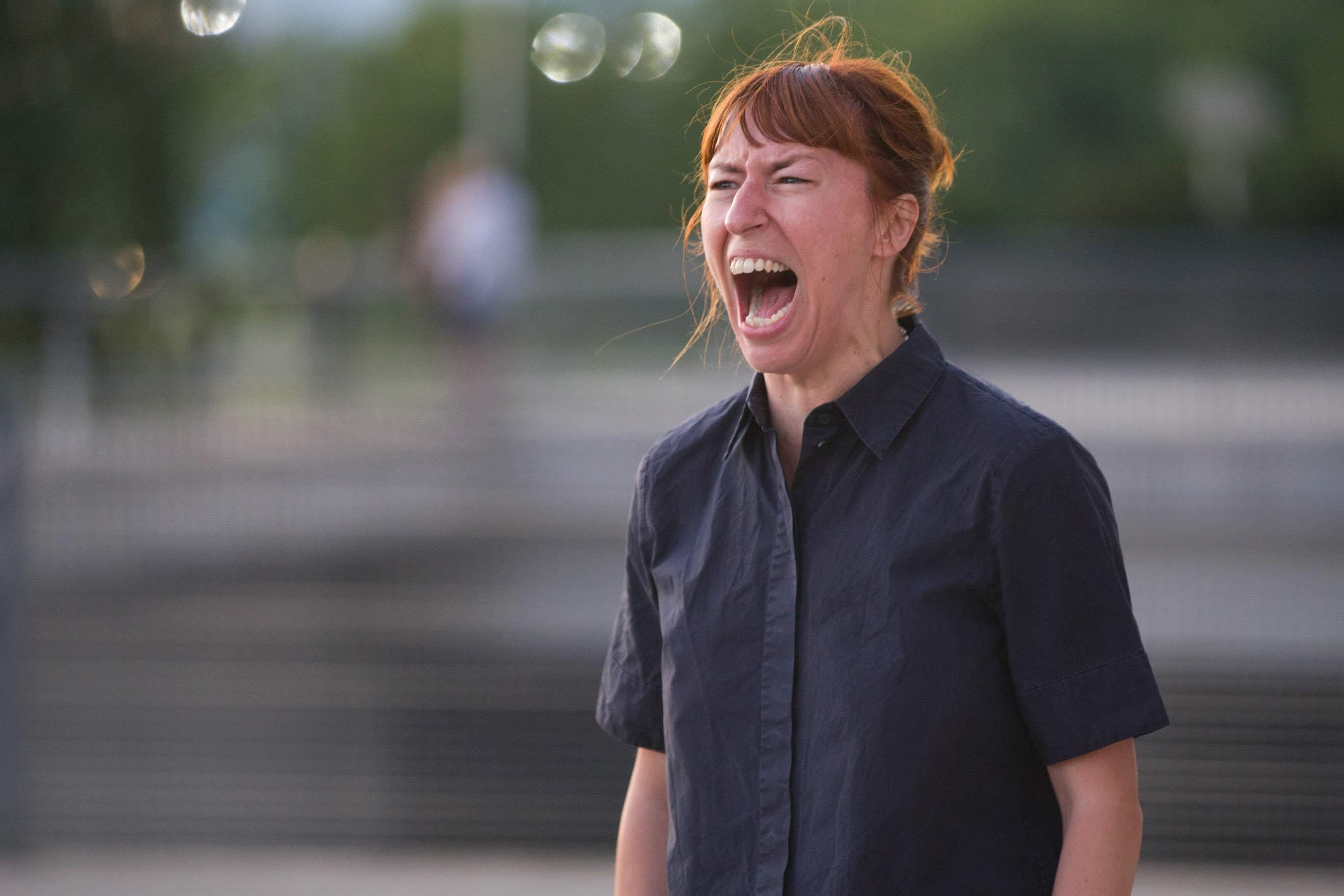
Anna Javoran
Politpraxis – Voicing Desire, 2025
The work unfolds as a lecture-performance of the artist’s ongoing praxis, developing and staging the idea of a “poly-erotic imagination.” Drawing on the legacy of the Yugoslav Black Wave as a socio-political, artistic phenomenon, Politpraxis – Voicing Desire (2025) transforms Eros, play, and diverse subjectivities into tools for examining how revolutionary trajectories, identity, and political imagination are shaped, inscribed, and constrained through images and the sensuousness of the body. The piece explores the boundary between emancipation and exploitation, between desire and coercion. In this context, the performance uses reading, the body, and a collective spark to create a space for voicing and testing new erotic-political narratives.
Anna Javoran is a young choreographer, performer, and dramaturg from Novi Sad, Serbia. In Zagreb, she completed the Contemporary Dance (Performance) program at the Academy of Dramatic Art, followed by an MA in Performance Dramaturgy. As a performer, her notable work includes collaborations with Sonja Pregrad on D O W L (2021) and O (2023), as well as the auto-bio-choreography jérôme bel as part of the STAGES project (HNK Zagreb, 2023). As a movement collaborator and assistant dramaturg, she has worked with directors such as Oliver Frljić, Árpád Schilling, Dino Mustafić, Vedrana Klepica, Ivan Plazibat, and Živa Bizovičar; as a dramaturg, she has collaborated with Mia Štark (Da nam padne rosna kiša, 2022) and with Dora Pocedić and Linda Tarnovski (co-lažiranje, 2024). She occasionally contributes to the Kulturpunkt.hr magazine. Her works as an author include stasis: to visit (with Ariana Prpić, 2020); the online collaborative project Nađena koreografija (2020); Tajni vrt (with Irma Unušić and Sabrina Fraternali, 2022); the mobile phone score One Mississippi Two Mississippi (2024); and the performance Strahovi malih razlika (with Viktorija Bubalo, 2022), which has won awards from professional contemporary dance associations.
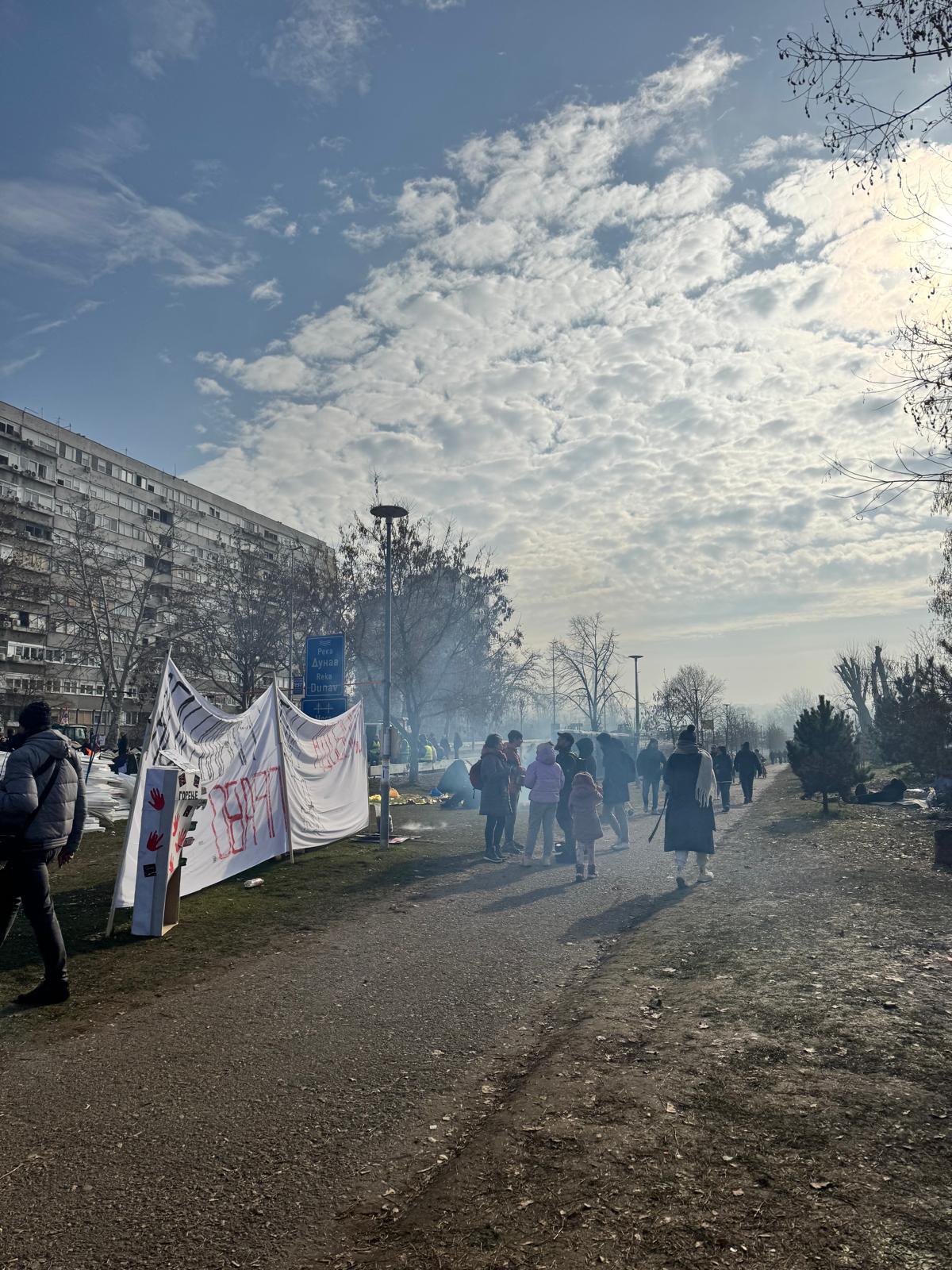
Nika Pećarina
In the Grace of Miracles or Misfortunes, 2025
The work proposes imagining destiny through the prism of a performative intervention into the archival holdings of the Ethnographic Museum. It builds on the premise that destiny is structured by a collective temporal process that enables an intimate encounter with deindividualization. It treats time as an infrastructure within which access to materials found in the museum’s collections storage offers new insights and opens the possibility of rearticulating minor historical experiences, while also addressing the issue of negotiating with the predetermined course of time.
Nika Pećarina holds an MA in New Media Art from the Academy of Fine Arts in Zagreb. He works at the intersection of audiovisual and performing arts, cultivating a practice of experimentation and improvisation. He approaches sound and text critically, bringing lyric, analytic, and sensory aspects into his work. His interest extends to acoustemology, performance, and various strands of artistic research, which often materializes as ceramics, film, sound, or poetry. He is dedicated to processes of knowledge whose interweaving brings together the material, the bodily, and the spiritual.
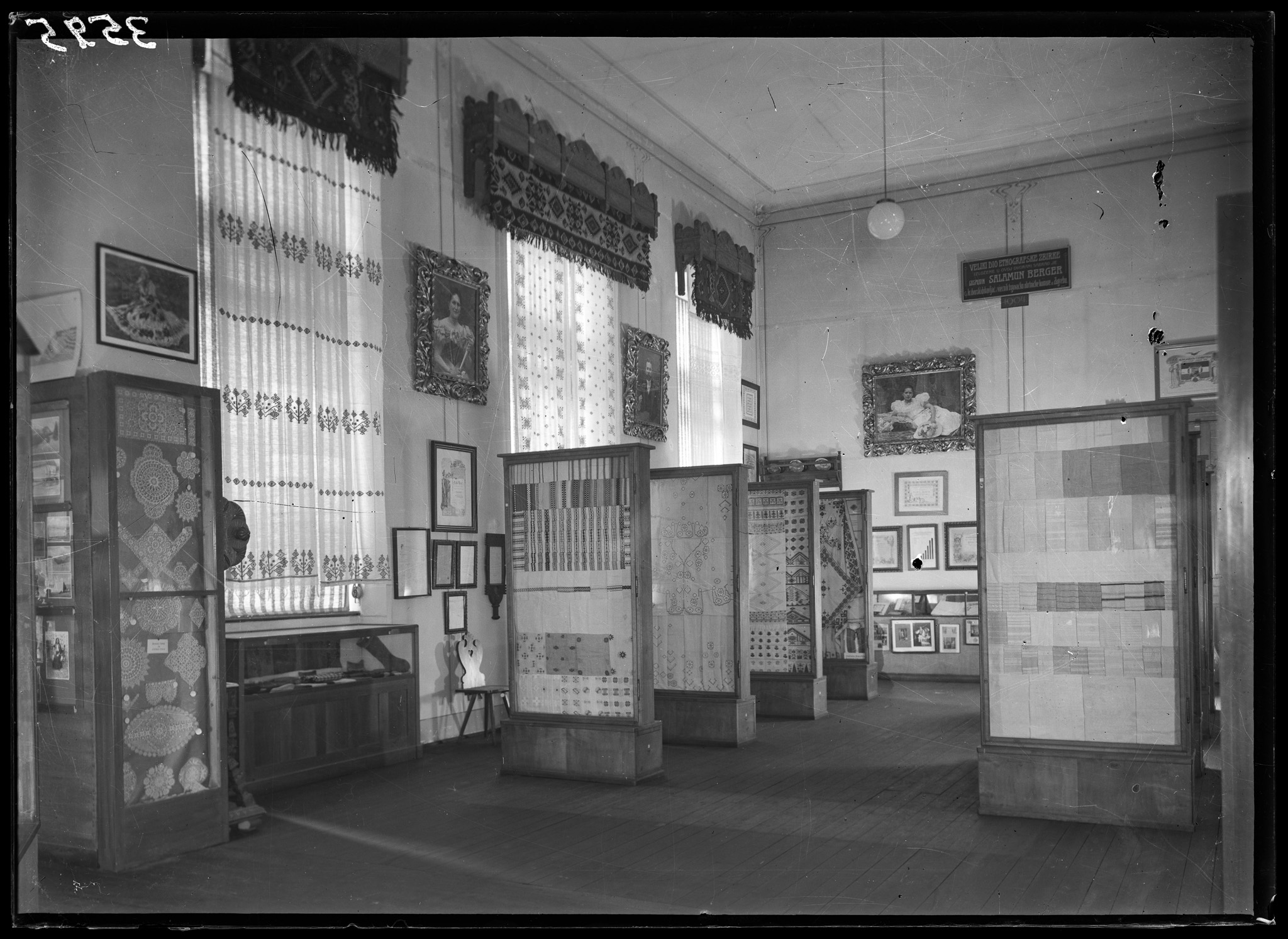
FILM PROGRAM
Afterlives: Restless Archives film screening
Kent Chan, Onyeka Igwe, Belinda Kazeem-Kamiński, Nii Kwate Owoo
programmed by Belinda Kazeem-Kamiński
Afterlives: Restless Archives features four films that drift through museums and archives, lingering with objects, images, and traces that bear the weight of colonial histories. Each work is propelled by an urge to search for what has been hidden, lost, or refused, and to listen to what institutions seem to silence.
In Nii Kwate Owoo’s You Hide Me (1970), the camera descends into the basements of the British Museum, where African artifacts lie packed away, unseen, their concealment echoing histories of displacement. Onyeka Igwe’s No Archive Can Restore You (2020) moves through the abandoned Nigerian Film Unit in Lagos, where dust, broken clocks, and rusting reels evoke the shadows of films that remain invisible, yet their traces insist on being remembered. Kent Chan’s Tell Tale (2023) listens in to the whispers within one museum’s storage. Replicas of displaced objects, all cast in ocean blue, share their stories about journeys across seas and centuries. Belinda Kazeem-Kamiński’s Unearthing. In Conversation (2017) stages an uncanny dialogue with ethnographic photographs, exposing the violence embedded in the act of looking and the persistence of colonial modes of representation.
Together, these films do not offer restoration or closure. Instead, they circle around absence and resonance, summoning past presences as fragile, restless, and unfinished. They remind us that archives and museums are never neutral repositories, but charged spaces where past and present continue to clash and converge, inviting us to imagine otherwise.
Nii Kwate Owoo
You Hide Me, 1970
Shot over 50 years ago, You Hide Me (1970) revealed for the first time previously unseen, rare Asante art treasures stolen by the British after the Sagrenti War and the invasion of Kumasi by Field Marshall Garnet Woseley in the 1870s. In 1970, Ghanaian filmmaker Nii Kwate Owoo managed to outsmart the directors of the British Museum and its security system to gain access to the museum’s secret underground vaults and film valuable African artifacts stowed away there. One day was enough to shoot this short film revealing the extent of the theft of African artifacts, stashed in plastic bags and wooden crates—and in doing so, to make a case for their restitution.
Born and raised in Ghana, Nii Kwate Owoo has been producing and directing films since the early 1970s. After graduating from the London Film School, he formed the first independent African film production company (Ifriqiyah Films) in the UK under which he produced and directed his first film, You Hide Me, a now widely acclaimed film on the colonization of African art in the British Museum. He served as the Editorial Manager of Écrans d’Afrique, published by FEPACI, The Pan African Federation of Film Producers. He has been active in the movement for a Pan African Cinema and co-produced and directed the feature documentary film OUAGA – African Cinema Now (1988) and Ama: An African Voyage of Discovery (1991) with Dr. Kwesi Owusu.
This version of the film is based on the original 16mm picture negative and was made possible by a collaboration between Arsenal – Institut für Film und Videokunst, the British Film Institute (BFI), and Nii Kwate Owoo.
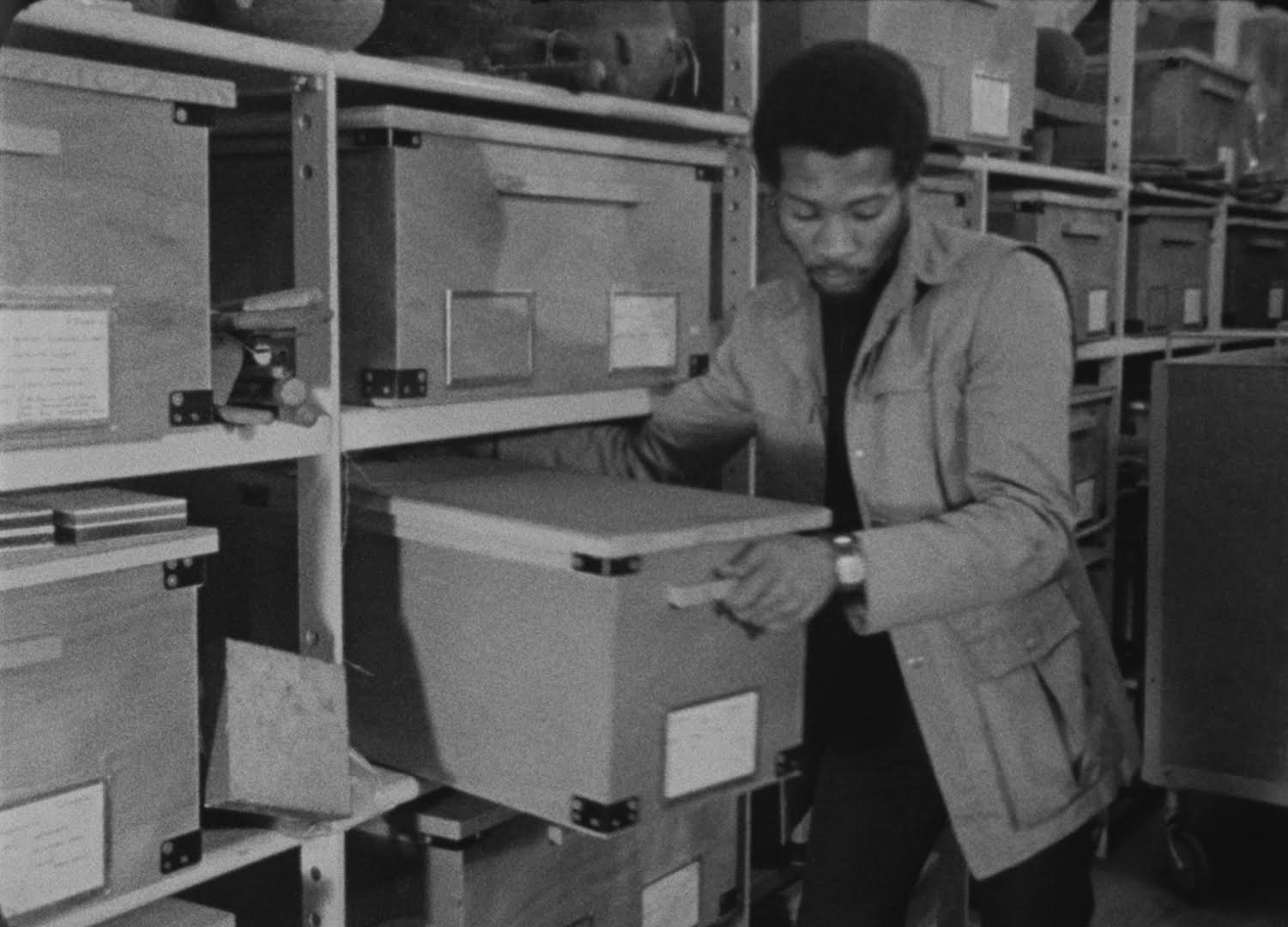
Onyeka Igwe
a so-called archive, 2020
A so-called ‘archive’ depicts a former colonial archive, imagining its “lost” films, using distinctive soundscapes, choral arrangements, and a radio play within the confines of images from a disembodied tour of the exquisite corpse of this building. This archive continues to be home to purulent images that we cannot, will not, or choose not to see.
Onyeka Igwe is a London-based moving-image artist and researcher. Her work is aimed at the question: how do we live together? She does not seek to provide a rigid answer as such, but to pull apart the nuances of mutuality, co-existence and multiplicity. Onyeka’s practice figures sensorial, spatial and counter-hegemonic ways of knowing as central to that task. She has had solo/duo shows at MoMA PS1, New York (2023); High Line, New York (2022); Mercer Union, Toronto (2021); Jerwood Arts, London (2019); and Trinity Square Video, London (2018). In 2024, she was included in “Nigeria Imaginary” at the National Pavilion of Nigeria for the 60th Venice Biennial.
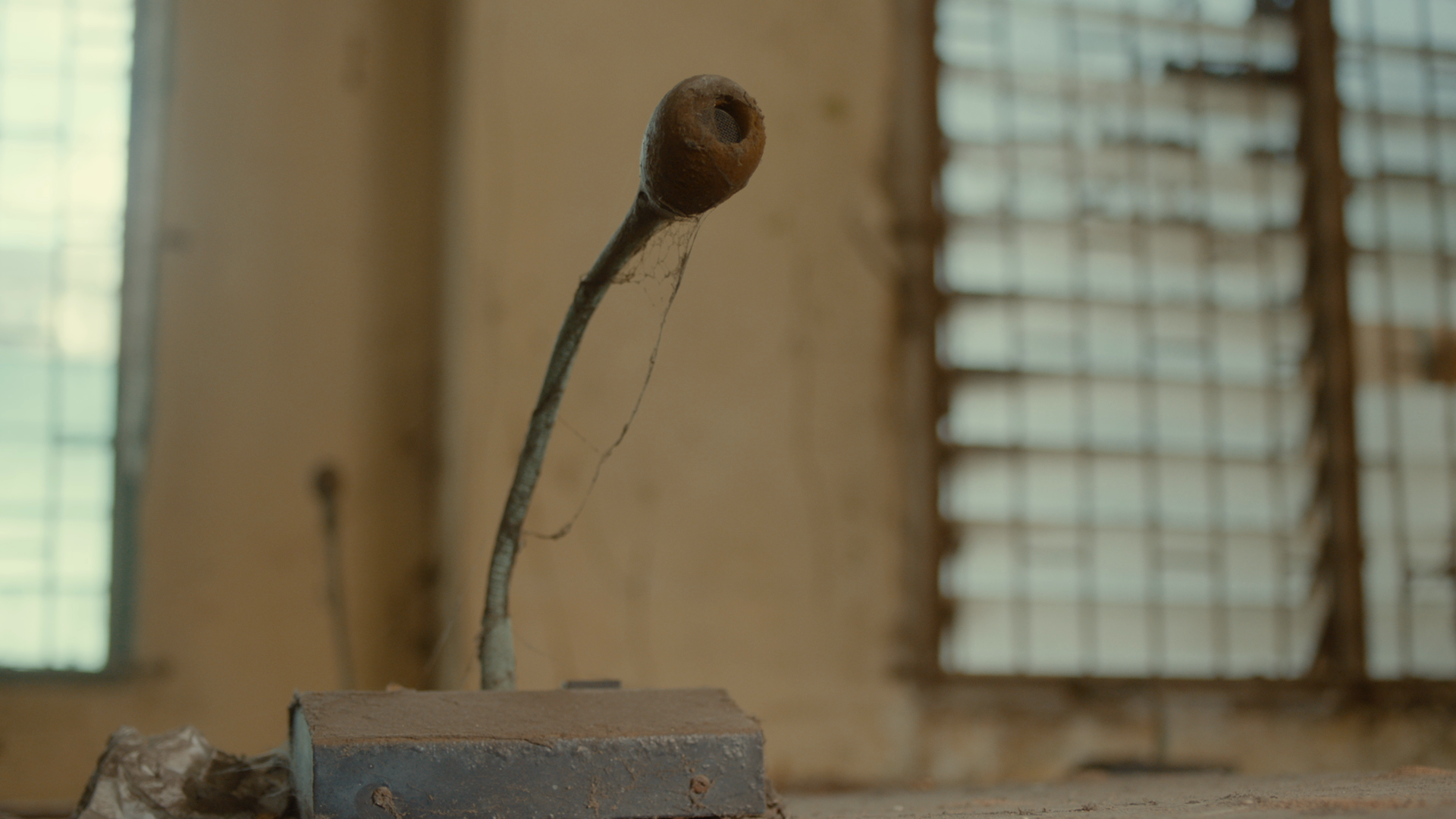
Kent Chan
tell-tale (feathers), tell-tale (idols), tell-tale (fire), 2023
Feathers, idols, fire. A series of images-turned-videos delves into the collections of the National Museum Liverpool (NML), pointing to Liverpool’s past prosperity as a major port city. Items from faraway tropical lands that know or have been shaped by heat are stashed away in the museum storage. Artworks or artifacts, kept alive or stay dead? What conversations might these items have away from human ears?
Kent Chan is an artist, curator, and filmmaker based in the Netherlands and Singapore. His practice revolves around our encounters with art, fiction, and cinema—a triumvirate of practices porous in form, content, and context. He holds particular interest in tropical imaginary; the past and future relationships between heat and art; and contestations to the legacies of modernity as the epistemology par excellence. His works have taken the form of moving-image, text, performances, and exhibitions.
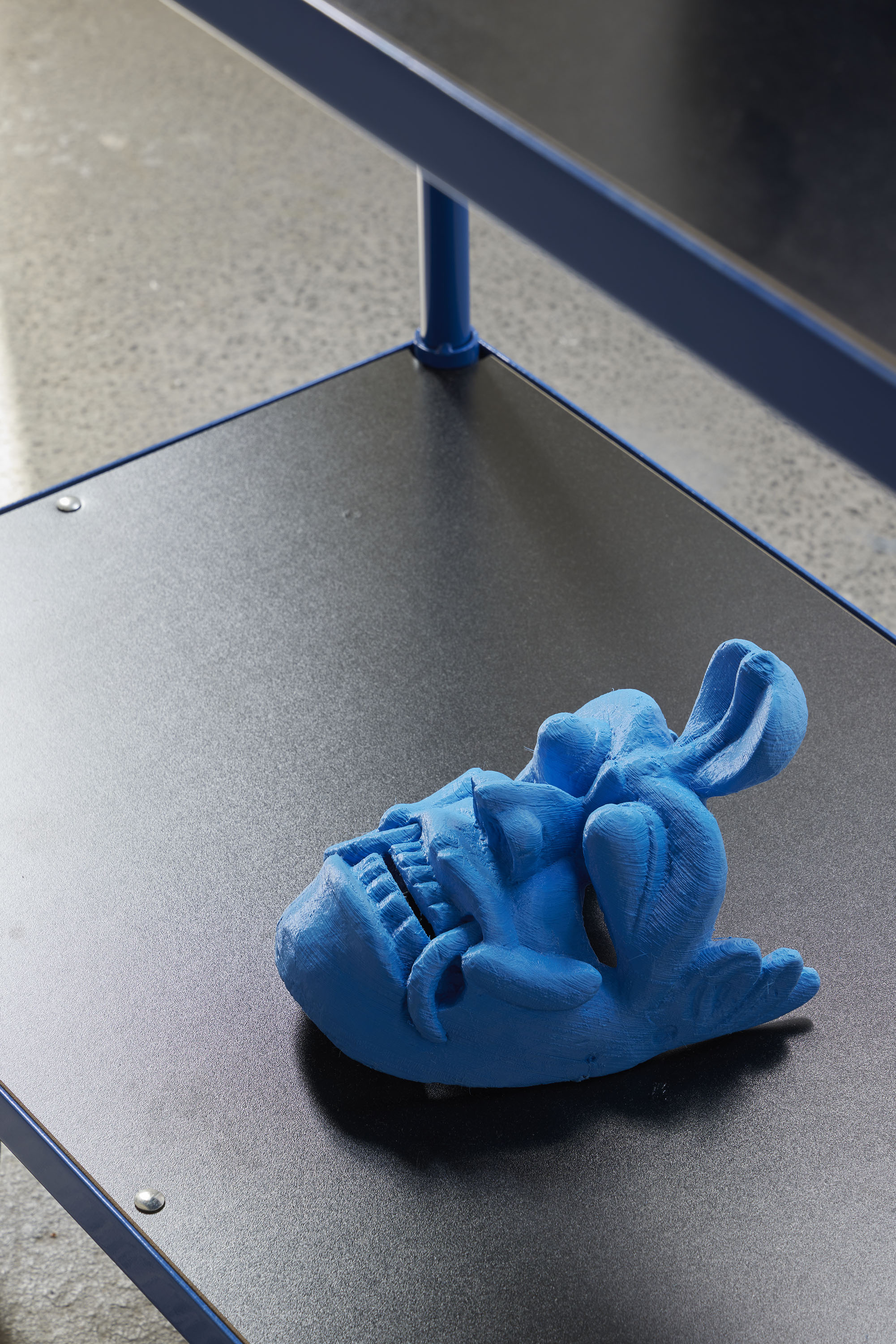
Belinda Kazeem-Kamiński
Unearthing. In Conversation, 2017
In Unearthing. In Conversation (2017), Belinda Kazeem-Kamiński confronts the colonial archive through photographs of people from the former Belgian Congo by Austrian-Czech missionary and ethnographer Paul Schebesta. While editing and interrogating the photographs to resist the voyeuristic colonial gaze, the artist addresses both the depicted subjects and us, the audience, searching for ways to speak beyond the violence of representation. The work interrogates how history and looking are shaped by colonial legacies, while imagining futures “haunted” by past failures. Memory here becomes a strategy to open up other presents and possibilities beyond the trauma of Othering.
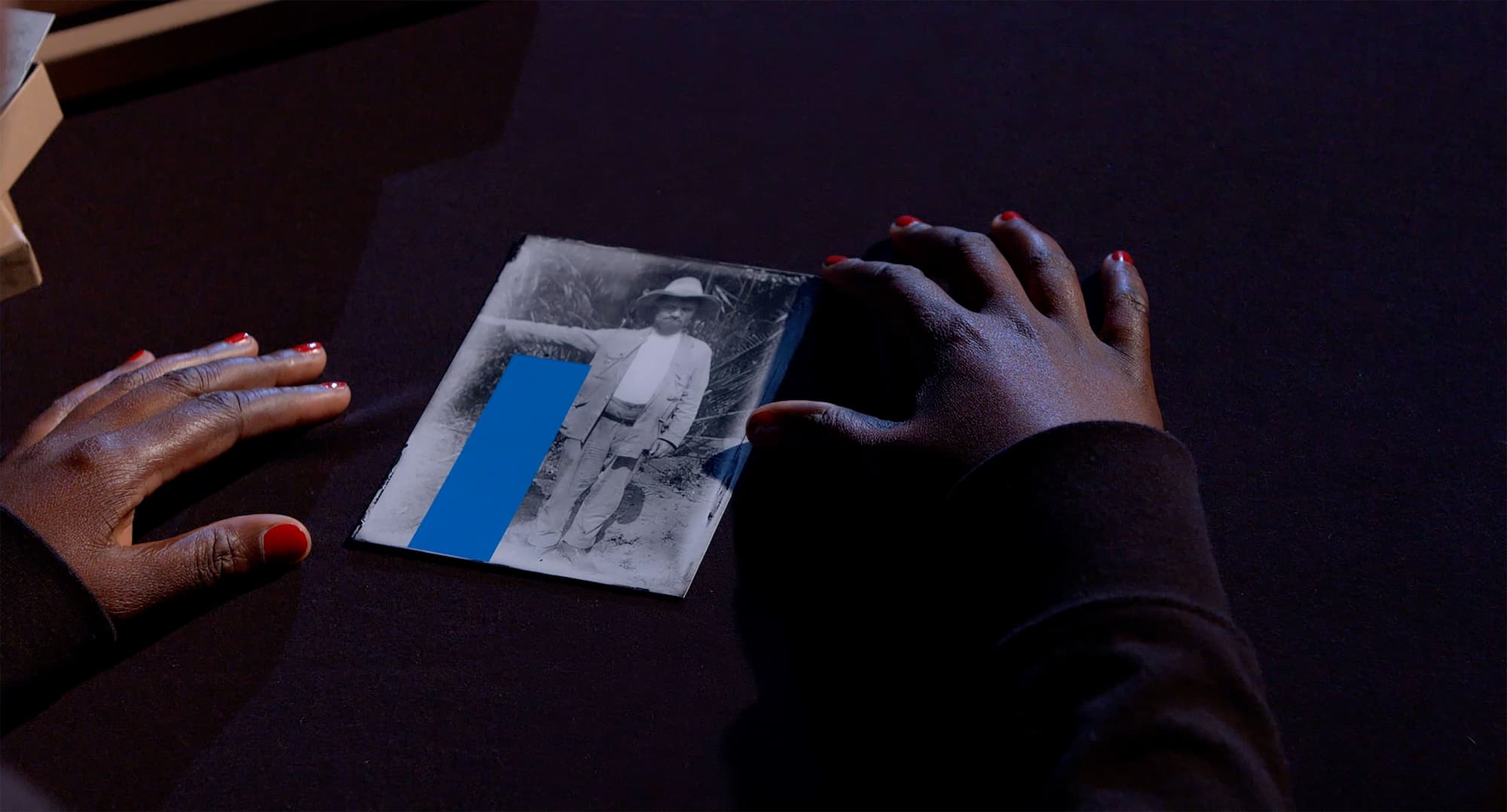
Produced by Petar Sarjanović.
Special thanks to Ethnographic Museum Zagreb for hosting us.
The exhibition and programs are supported by:
City Office for Culture and Civil Society of the City of Zagreb
Ministry of Culture and Media of the Republic of Croatia
Kultura Nova Foundation
Croatian Audiovisual Centre
Sponsors:
Beton Lučko
Pinky-S



